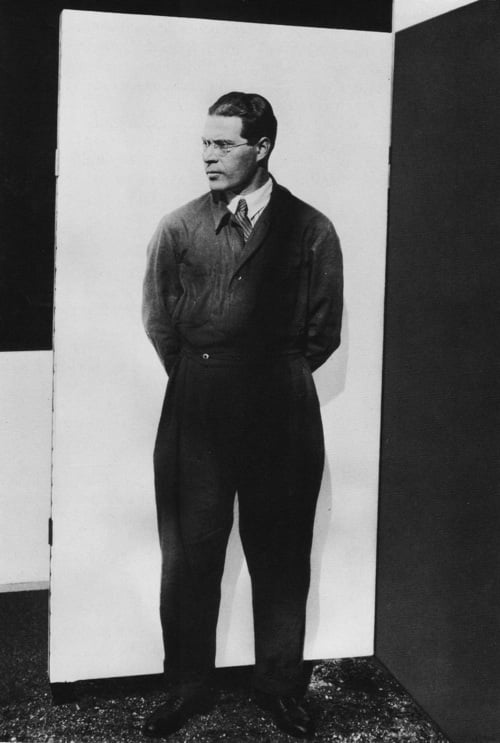László Moholy-Nagy
By:
July 20, 2011

Though he began as a painter, LÁSZLÓ MOHOLY-NAGY (Laszlo Weisz, 1895-1946) innovated in — and in some cases virtually invented — a vast array of media, including photograms (which he developed independently of Man Ray), sly collages that diagrammed psychosocial relationships with Euclidean precision, and films like 1930’s Lightplay: Black White Gray, which “starred,” rather glamorously, his kinetic sculpture Light-Space Modulator. Whatever the format, his life’s work proceeded from the contention that “the manner in which lines are related, not objects, as such, carried the richer message,” a discovery the WWI veteran had made even before leaving his native Hungary for Berlin in the early 20s and making common cause with El Lissitsky and Theo Von Dosenburg — like-minded “constructivists” whose pro-technological optimism was the flipside to Dada despair. Between the wars, the largely self-educated artist was a mainstay of the Bauhaus, typesetting its envelopes and annual reports while teaching the school’s defining “Foundation” course in materials and composition. Like many a “degenerate” artist, his career after Hitler’s rise was peripatetic, taking him to England and America, where, he wrote to his wife Sybil, “the provocative statement of modern art is constantly annulled by chequebook and cocktail party.” Still, Moholy-Nagy’s technical gifts and relatively practical-minded brand of utopian modernism served him better than many refugees, finding expression in posters for the London Underground, passenger cars for the B&O Railroad, and the iconic, bullet-like “Parker 51” fountain pen.
***
On his or her birthday, HiLobrow irregularly pays tribute to one of our high-, low-, no-, or hilobrow heroes. Also born this date: Diana Rigg and Nam June Paik.
READ MORE about members of the Hardboiled Generation (1894-1903).
